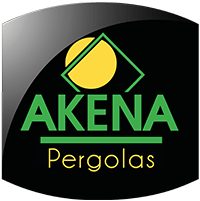You have chosen to install a pergola to get the most out of your outdoor space. Increasingly modern and aesthetic, contemporary pergolas are true relaxation areas. Just imagine the good times spent with the family and meals with friends in the garden, protected from the sun and bad weather! Let's take a moment to look at the most adapted materials for the construction of the shelter of your dreams.
The materials for the structure of your pergola
The structure of a pergola is most often made of wood, aluminium or wrought iron. Some pergolas are made of PVC, but it is not a durable material.
Little by little, aluminium is replacing wood, even though the latter is traditional and very attractive. The sleek lines of modern pergolas require a very malleable material. In addition, aluminium is durable and requires little maintenance. Nevertheless, wood and wrought iron are still highly sought-after. Let's compare these three materials.
An aluminium structure
Regardless of the type of pergola that you wish to build, aluminium adapts to all environments. If your pergola is wall-mounted, it will be in perfect harmony with your home. If you wish to build a freestanding pergola, it will blend in with the natural landscape.
Considered as an exceptional material, aluminium is ultra-durable. It does not rust and is not damaged by bad weather and UV rays. It is quick and easy to maintain. We recommend you clean your aluminium pergola twice a year with soapy water. Child's play!
If you plan to install a bioclimatic pergola, aluminium is THE material to use. It is very popular for its durability as well as its recyclable and ecological aspect. Moreover, the adjustable slats of an aluminium bioclimatic pergola dry quickly, which is very useful for rainy days.
The final advantage: builders propose aluminium structures in different colours.
The traditional wooden structure
Wood is very elegant and the material that is most frequently used for the construction of pergolas. Recalling the pergolas of Italian gardens, wood brings a romantic touch to your garden. It is possible to build a bioclimatic pergola in wood. Wood fits in perfectly with a green environment and gives a warm and natural appearance.
Nevertheless, certain special requirements should be respected. As wood is a natural material, it reacts to climatic conditions and requires treatment. It is best to choose category 3 or 4 wood species (oak, pine, teak, cedar, etc.), which are quite suitable for outdoor use. Autoclave treatment preserves natural wood from the aggression of insects and fungi.
Wood is also used for the structure and adjustable slats of certain bioclimatic pergolas.
The wrought iron pergola
Ah! The poetic and vintage curves of wrought iron! This traditional craftsmanship brings character to your outdoors. It is durable and admirably accommodates climbing plants. Nevertheless, there are fewer and fewer wrought iron pergolas because it is a material that requires painstaking care. In fact, as solid as it may be, iron rusts and crumbles. It must therefore be cared for with a cleaning agent, rust must be sanded and the structure must be regularly treated with anti-rust paint.
Covering materials for pergolas
The following materials are the most common for pergola roofs:
- polycarbonate;
- glass (double glazing);
- plexiglass;
- wooden slats;
- tiles;
- reed screens, etc.
If you choose a tiled roof, choose a model that is similar to the roof of your home to create harmony.
Polycarbonate is one of the most commonly used materials for the covers of aluminium pergolas. It allows natural light to enter while protecting from UV rays.
Retrouvez nos autres conseils
Aucun résultat ne correspond à votre recherche
